Mary Anne Yarde's Blog: The Coffee Pot Book Club , page 210
February 11, 2017
#bookreview ~ Dragon Knight’s Ring @m_morganauthor #romance
Dragon Knight’s Ring(Order of the Dragon Knights #5) By Mary Morgan
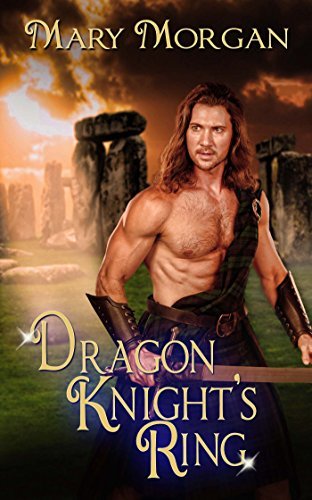 Crusader, Adam MacFhearguis is on one last quest to the standing stones in Scotland where he seeks to bury the past. However, a silent prayer sends him to an unknown future and to his beloved Meggie. When he uncovers a shocking revelation, Adam questions everything about the woman he thought he knew and loved. He may have traveled the veil of ages, but time is now his enemy.
Crusader, Adam MacFhearguis is on one last quest to the standing stones in Scotland where he seeks to bury the past. However, a silent prayer sends him to an unknown future and to his beloved Meggie. When he uncovers a shocking revelation, Adam questions everything about the woman he thought he knew and loved. He may have traveled the veil of ages, but time is now his enemy.
Margaret MacKay lives a life in the future without the memories of her past—her death. When Adam arrives at her door confessing he knows her, she is confused and wary. With each passing day, she yearns to learn more from this stranger. Yet, when a truth is revealed, can she trust the man to unlock the chains from her mind and heart?
Will love free the bonds to unite the two lovers who were doomed centuries ago? Or will evil finally claim victory over the Dragon Knights? What did I make of the book?
I was so looking forward to getting my hands on the last of The Dragon Knight's and reading Adam’s and Margaret’s story. As readers of the series will know, the series starts with Margaret's death, but what Adam thought was the end of their love, was in fact, only the beginning. I am pleased to say that Ms Morgan has surpassed herself with Dragon Knight Ring. It was awesome!!
Adams grief at losing his Meggie was heartbreaking. And his discovery that she is alive, although in another time, was one of immense joy but also terrible sorrow, for when they are reunited, she can remember nothing of what came before. He has to begin again. His courtship of her is wonderful, and I thought, beautifully written.
Meggie is this wonderfully strong woman who is desperate to know of her past and gets so frustrated with her inability to remember. Her journey of discovery is a very brave one. But she listens to her heart, and she follows where that leads.
The story itself is a brilliant conclusion to what has been the most fantastic journey. I am going to miss those Dragon Knights. I can not recommend this book, or this series enough. A must read.
Where can I purchase the book?Amazon US Amazon UKAbout the author Scottish paranormal romance author, Mary Morgan resides in Northern California, with her own knight in shining armor. However, during her travels to Scotland, England, and Ireland, she left a part of her soul in one of these countries and vows to return.
Scottish paranormal romance author, Mary Morgan resides in Northern California, with her own knight in shining armor. However, during her travels to Scotland, England, and Ireland, she left a part of her soul in one of these countries and vows to return.
Mary's passion for books started at an early age along with an overactive imagination. She spent far too much time daydreaming and was told quite often to remove her head from the clouds. It wasn't until the closure of Borders Books where Mary worked that she found her true calling--writing romance. Now, the worlds she created in her mind are coming to life within her stories.
Useful Links
Website
Blog
Twitter
 Crusader, Adam MacFhearguis is on one last quest to the standing stones in Scotland where he seeks to bury the past. However, a silent prayer sends him to an unknown future and to his beloved Meggie. When he uncovers a shocking revelation, Adam questions everything about the woman he thought he knew and loved. He may have traveled the veil of ages, but time is now his enemy.
Crusader, Adam MacFhearguis is on one last quest to the standing stones in Scotland where he seeks to bury the past. However, a silent prayer sends him to an unknown future and to his beloved Meggie. When he uncovers a shocking revelation, Adam questions everything about the woman he thought he knew and loved. He may have traveled the veil of ages, but time is now his enemy. Margaret MacKay lives a life in the future without the memories of her past—her death. When Adam arrives at her door confessing he knows her, she is confused and wary. With each passing day, she yearns to learn more from this stranger. Yet, when a truth is revealed, can she trust the man to unlock the chains from her mind and heart?
Will love free the bonds to unite the two lovers who were doomed centuries ago? Or will evil finally claim victory over the Dragon Knights? What did I make of the book?
I was so looking forward to getting my hands on the last of The Dragon Knight's and reading Adam’s and Margaret’s story. As readers of the series will know, the series starts with Margaret's death, but what Adam thought was the end of their love, was in fact, only the beginning. I am pleased to say that Ms Morgan has surpassed herself with Dragon Knight Ring. It was awesome!!
Adams grief at losing his Meggie was heartbreaking. And his discovery that she is alive, although in another time, was one of immense joy but also terrible sorrow, for when they are reunited, she can remember nothing of what came before. He has to begin again. His courtship of her is wonderful, and I thought, beautifully written.
Meggie is this wonderfully strong woman who is desperate to know of her past and gets so frustrated with her inability to remember. Her journey of discovery is a very brave one. But she listens to her heart, and she follows where that leads.
The story itself is a brilliant conclusion to what has been the most fantastic journey. I am going to miss those Dragon Knights. I can not recommend this book, or this series enough. A must read.
Where can I purchase the book?Amazon US Amazon UKAbout the author
 Scottish paranormal romance author, Mary Morgan resides in Northern California, with her own knight in shining armor. However, during her travels to Scotland, England, and Ireland, she left a part of her soul in one of these countries and vows to return.
Scottish paranormal romance author, Mary Morgan resides in Northern California, with her own knight in shining armor. However, during her travels to Scotland, England, and Ireland, she left a part of her soul in one of these countries and vows to return. Mary's passion for books started at an early age along with an overactive imagination. She spent far too much time daydreaming and was told quite often to remove her head from the clouds. It wasn't until the closure of Borders Books where Mary worked that she found her true calling--writing romance. Now, the worlds she created in her mind are coming to life within her stories.
Useful Links
Website
Blog
Published on February 11, 2017 00:00
February 10, 2017
#bookreview ~ Highland Light #HistFic #Romance @CherimeMacFarla
Highland Light
The MacGrough Clan Book 1
ByCherime MacFarlane

HIGHLAND LIGHTis a historical romance set in 1308 during the Scottish war for independence.
A young Scots girl cannot find a man who appreciates a headstrong plain woman. A small group of Knights Templar escape to Scotland to hide and start new lives. Among them is a young man, a ward of the Master of the Temple. The men have brought a treasure to Scotland. In exchange for a large share of the treasure, the knights may marry and be adopted into certain clans. No one must know of the agreement. Each man has a duty to the clan they are adopted into, and a duty owed to Robert The Bruce.
One young man has been with the Templars since the age of ten. He knows nothing of relationships or women. Their wedding is a business arrangement. Having no experience of sex or marriage, the young couple make a game of loving and learn of life together.
Let the games begin.
What did I think of the book?
Gideon has been the ward of The Masters of the Knights Templar since he was ten years old. But things are about to change. The Knights' have been forced to flee from Philip the Fair of France, and as the Pope has already excommunicated The Bruce, Scotland seems as safe a place as any to seek sanctuary.
Ailene MacGrough is headstrong, fiercely independent and a courageous young woman. She has so far rejected every suitor that has been presented to her, but there was something about Gideon that caught her eye.
Determined to put an end to the brutality of Edward Longshanks and his claim to the throne of Scotland, The Bruce organises a secret meeting between his supporters and the Templars. Bruce commands that the only way he will offer sanctuary to the Templars is if they marry an eligible Scottish maiden, which will then make them the citizens of this war torn country.
Gideon knows nothing of women but suddenly finds himself with a wife, a family, and a country to protect.
Can Gideon and Ailene's new-found love survive the horror of the Scottish War of Independence — only time will tell.
Oh. My. Days...! I would like to call Highland Light a romance, but it is so much more than that. It is an epic story about innocent young love, set in the backdrop of war. MacFarlane did a staggering job of bringing 14th Century Scotland back to life, and her attention to detail must be commended. A thoroughly well researched and breath-taking read.
MacFarlane gives her readers just the right amount of detail. Whether that be with regards to the love making scenes— in this case, less is certainly more — and the battle scenes, which gives her readers a sense of what it must have been like in the heat of battle, but without going overboard with the detail.
This is a truly addictive read — once you start you are so not going to want to stop. I couldn't wait to get back to the book every evening to find out what was going to happen next.
Do I Recommend? You bet ya! A fantastic 5* read.
Links for PurchaseAmazon USAmazon UK
About the author
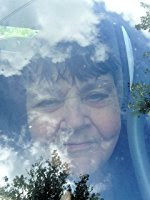 Meet Award-Winning, Best-Selling Author Cherime MacFarlane. A prolific multi-genre author, she has a broad range of interests that reflect her been there-done that life. Romance, Historical Fiction, Fantasy, Paranormal, all sorts of characters and plots evolve from a vivid imagination.
Meet Award-Winning, Best-Selling Author Cherime MacFarlane. A prolific multi-genre author, she has a broad range of interests that reflect her been there-done that life. Romance, Historical Fiction, Fantasy, Paranormal, all sorts of characters and plots evolve from a vivid imagination. I came to Alaska kicking and screaming in 1976, and I never want to leave. I cut firewood on shares for money to get through the winter. I swore I would not live above the Alaska Range because it was too cold there and wound up in the Copper River Basin where it got just a cold as Fairbanks.
My second husband, a Scot from Glasgow, was the love of my life. When I write Scots dialect, I experienced hearing it from my in-laws. Each time my husband got on the phone to Scotland after five seconds, I could hardly understand a word. I was my second husband's chief mechanic's helper and roadie.
I live in a cabin which is slowly being surrounded by the city and wish I were further out. My two cats and Husky-Collie mix dog are happy in our little slice of heaven called Alaska. In the silence of winter dreams of people and places provide a rich pool of ideas to explore.
As a reporter for the Copper Valley Views, Cherime MacFarlane received a letter of commendation from the Copper River Native Association for fair and balanced reporting.
Cherime won the Hardest Working Author Award from Author Classified.
Published on February 10, 2017 00:00
February 9, 2017
Little John — The Good Outlaw? #history
Okay, we all know the story of Robin Hood and Little John. Little John was Robin's second in command. He was dependable, always there for Robin. They lived together in Sherwood Forest, and they were a champion for the poor.
But....is any of this true?
We have already talked about a possible real Robin Hood, but was Little John a real person, or was he a character from fiction?
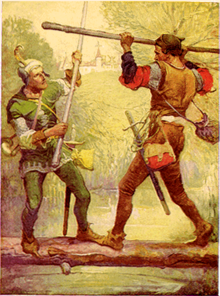 "Robin Hood and Little John" — Louis Rhead.
"Robin Hood and Little John" — Louis Rhead. Little John appears really early on in the ballads and stories of Robin Hood.
In A Gest of Robyn Hode, Robin Hood and Little John's adventures are recorded for the first time, and again In Robin Hood and the Monk, we learn how fiercely loyal Little John is to Robin. The stories are great to read, check them out when you have five!
 A sixteenth-century printed edition of A Gest of Robyn Hode.
A sixteenth-century printed edition of A Gest of Robyn Hode. Little John is portrayed as highly intelligent and a good friend, who was a giant of a man — at least seven feet tall! Sound familiar?!
How did Robin and Little John meet?
Robin and Little John first meet on a narrow bridge. Robin Hood wants to cross the bridge, but John Little will not let him. They end up fighting with quarterstaves. John is an expert at this weapon and defeats Robin. The two of them talk, and John Little agrees to join Robin's band of merry men. Robin jokingly changes John Little's name to Little John — one can assume because he is so tall!
Robin Of Sherwood ~ Robin vs. Little John
But is there any truth in the story. Was Little John real?
Historian, Michael Wood, seems to think so...
"It is a Kent homicide case of 1313, for example, that we first encounter one of Robin's best loved companions, when a real-life criminal John of Shrone is introduced to court with an intriguing alias: 'also known as Johannes Petit' — Little John..." In Search of England.
Many believe. It is reputed that Little John is buried in a churchyard in the village of Hathersage, Derbyshire.
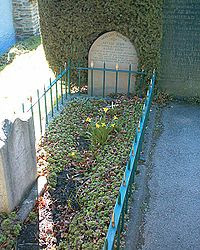 Little John's grave in St Michael's Church graveyard, Hathersage.
Little John's grave in St Michael's Church graveyard, Hathersage.So was Little John a real historical person or a work of folklore? I think that is up to you to decide.
Published on February 09, 2017 00:00
February 8, 2017
Author’s Inspiration ~ Jenny O’Brien #childrensbooks @scribblerJB
It is with the greatest of pleasures that I welcome children’s author, Jenny O’Brien, onto the blog. Lets first take a look at Jenny’s latest book…
Boy Brainy

Dai Monday is being bullied, but what does he expect with a name like Die! He doesn't think life can get any worse and then it does.
He's sent on a mission to find the the last Welsh Princess of Wales crown by the ghost of King Arthur - a crown that's been missing for centuries.
'Dai Monday's Boy Brainy is the first in a series of books aimed at children age 7 to 11 years (middle graders). There's ghosts and dragons (obviously), magic and mayhem - in fact all of the elements of an exciting story that finds a little boy with Aspergers, chasing around Conwy Castle in the search of the Princess's crown.
Author’s Inspiration
 How can the character of King Arthur be anything less than inspiring and? But as a character for a children's book an obvious choice, for me at least. As a character, as a story what better place than the mystical lands and people of the round table? There's swords. There's dragons. There's damsels in distress not to mention the odd damsel in the lake - all wonderful tools for a writer. Boy Brainy, my children's book started out with just a name, Dai Monday. A name that sprang to mind in 2008 out of nowhere. I wasn't even a writer at the time so I had a steep learning curve. It took me a year to formulate a plan. I wanted to use the name as a character for a book, a children's book but not any old book - a children's book to raise the self-esteem of children that had been bullied. Come 2009 I had the name and finally I had the country - Wales. I'd spent a lot of time in Wales over the years and what better place to set a book than one of the Welsh castles, the only problem being which one to choose. Next came a trip to the library closely followed by a stroke of luck in the form of King Arthur's crown.Have you ever heard of King Arthur's crown? No, I'm sure you haven't but if you Google it you'll discover it actually existed. Now if King Arthur's crown, or Coron Arthur existed what about the man himself? Is he myth, fantasy or reality? It's a question I can't answer even now after spending years reading up on the topic. So, on leaving the library weighed down by books with Edward the First's gloomy portrait on the cover I learnt about his invasion of Wales, the building of his five Welsh castles, or fortresses and finally I learnt the sad tale of the last Welsh Princess of Wales, Gwenllian. From this I had a loose plot. The ghostly form of King Arthur searching for his crown so that it could be returned to the last Welsh Princess, all I needed now was a place. I decided on Conwy for the setting, even though I live many hundreds of miles away but I'd visited as a child and always had a soft spot for this little magical part of the world with its dark derelict grey stone looming over the quaint old town. I chose Conwy Castle although I'd never visited, all my information coming from guidebooks and further library visits even down to the number of steps up to the Chapel Tower, which features heavily. The gift shop also features in the form of Dai's mum being manageress. Again as I'd never visited everything came out of my imagination apart from the Ugly Pottery, which is a range of unique Welsh ceramics sadly no longer In production. In a way you could say I wrote the book the wrong way round. Everything that's meant to be fact (the castle, the ghost file, all the people) is from my imagination and the one thing that's meant to be mythical (King Arthur) may turn out to be real after all.
How can the character of King Arthur be anything less than inspiring and? But as a character for a children's book an obvious choice, for me at least. As a character, as a story what better place than the mystical lands and people of the round table? There's swords. There's dragons. There's damsels in distress not to mention the odd damsel in the lake - all wonderful tools for a writer. Boy Brainy, my children's book started out with just a name, Dai Monday. A name that sprang to mind in 2008 out of nowhere. I wasn't even a writer at the time so I had a steep learning curve. It took me a year to formulate a plan. I wanted to use the name as a character for a book, a children's book but not any old book - a children's book to raise the self-esteem of children that had been bullied. Come 2009 I had the name and finally I had the country - Wales. I'd spent a lot of time in Wales over the years and what better place to set a book than one of the Welsh castles, the only problem being which one to choose. Next came a trip to the library closely followed by a stroke of luck in the form of King Arthur's crown.Have you ever heard of King Arthur's crown? No, I'm sure you haven't but if you Google it you'll discover it actually existed. Now if King Arthur's crown, or Coron Arthur existed what about the man himself? Is he myth, fantasy or reality? It's a question I can't answer even now after spending years reading up on the topic. So, on leaving the library weighed down by books with Edward the First's gloomy portrait on the cover I learnt about his invasion of Wales, the building of his five Welsh castles, or fortresses and finally I learnt the sad tale of the last Welsh Princess of Wales, Gwenllian. From this I had a loose plot. The ghostly form of King Arthur searching for his crown so that it could be returned to the last Welsh Princess, all I needed now was a place. I decided on Conwy for the setting, even though I live many hundreds of miles away but I'd visited as a child and always had a soft spot for this little magical part of the world with its dark derelict grey stone looming over the quaint old town. I chose Conwy Castle although I'd never visited, all my information coming from guidebooks and further library visits even down to the number of steps up to the Chapel Tower, which features heavily. The gift shop also features in the form of Dai's mum being manageress. Again as I'd never visited everything came out of my imagination apart from the Ugly Pottery, which is a range of unique Welsh ceramics sadly no longer In production. In a way you could say I wrote the book the wrong way round. Everything that's meant to be fact (the castle, the ghost file, all the people) is from my imagination and the one thing that's meant to be mythical (King Arthur) may turn out to be real after all. Links to PurchaseAmazon USAmazon UK
About the authorJenny O'Brien was born in Ireland a very long time ago. She's an avid reader and book reviewer for NetGalley in addition to being a 2016 RoNA judge.
She writes for both children and adults with a new book coming out every six months or so.
She's also an avid collector of cats, broken laptops, dust and happy endings - two of which you'll always find in her scribblings!
She lives in Guernsey and, in her spare time she can be found frowning at her wonky cakes and even wonkier breads. You'll be pleased to note she won't be entering Bake-Off.
Published on February 08, 2017 00:00
February 7, 2017
Cornwall ~ a forgotten history? #history
What springs to mind when you think of Cornwall?
Poldark?

Mining?
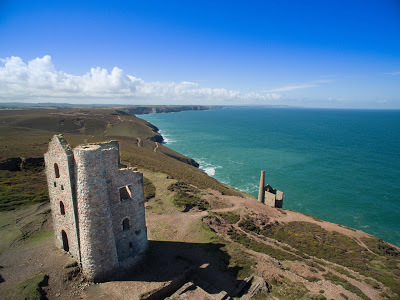
Nice beaches?

The Eden Project?

King Arthur?

Cornwall has a long and interesting history with regards to Arthurian Legend. It was the kingdom of King Mark — the cuckolded king in the legend of Tristan and Isolde. Cornwall is also home to Tintagel Castle, which is where Geoffrey Monmouth and his great work The History of the Kings Britain, gave as Arthur's birthplace.

If you are a reader of The Du Lac Chronicles series, then you will be familiar with my interpretation of what Cornwall was like back in the year 495 AD. I think Cornwall is a very special place with a remarkable history and one that is often overlooked.
Let's go back in time and take a look at Cornwall during the Roman occupation...
The Roman occupation of Cornwall is very intriguing. It has been suggested that the Roman's stopped at Devon. There are a few milestone and evidence of Roman occupation in Cornwall, but not on the scale of the rest of the country. The stories of Hadrian's Wall and Scottish rebellion against the Romans is renowned, but nothing is said about Cornwall. Why didn't the Roman's colonise Cornwall like they did to the rest of England?

Let's take a closer look at Cornwall's history. Cornwall was very much its own kingdom, separated from the rest of Britain, not only by her language — Cornish — but by an independent spirit that refused to bow down to imposed authority. Was this why the Roman's overlooked her to some extent? I am not so sure.
With the departure of the Romans, Briton had to contend with a new and very aggressive invader — The Saxons.
If the Anglo-Saxon Chronicles are to be believed, then Cerdic of Wessex and his Saxon army landed in Hampshire in 495 AD. By 419, Cerdic had conquered the south of England, with the exception of Cornwall. Curious, isn't it?
Why? What made Cornwall different?
There are many reasons, but I think trade had a lot to do with it. The Cornish could be independent because they knew what they were doing when it came to commerce. They had trade agreements with Brittany, Wales and Ireland. Perhaps that is why the Roman's didn't feel the need to invade Cornwall as they did with the other kingdoms in England and Wales. Maybe Cornwall was a good trading partner — one that they had no need to upset.

Cornwall had something everyone wanted. Tin. The history of mining for tin goes way back, and one thing they were good at was mining for it. Silver has also been found in Cornwall. The land is rich with treasure for those who know where to look. Kingdoms who trade fairly are an asset. Why would you want to upset the apple cart, so to speak, by invading? But for Cornwall, trade meant something else as well. It meant money, and money meant they could afford the arms to defend their kingdom if need be.
It wasn't until the Battle of Hingston Down, in 838, when Cornwall lost her independence to Wessex – they repelled the Saxons for over 400 years. Now, that is impressive. I wonder why it isn't remembered?
What bravery, what spirit this little kingdom had.
In my novella, The Pitchfork Rebellion, Alden du Lac, son of Lancelot, has just won his kingdom, Cerniw (Cornwall), back from Cerdic of Wessex and now he has to take stock, bring his country back together under his leadership, and rebuild a stronger and greater kingdom that could stand against another invasion. But things are never easy, and Alden faces many challenges from both home and abroad before he can settle back into leadership. I hope I have brought to the attention this great nation, which wasn't afraid to take a stand against what it believed in. Cornwall is the epitome of FREEDOM!

Amazon USAmazon UK
Published on February 07, 2017 00:00
February 6, 2017
New Release ~ The Thread That Binds Us #womensfiction @joan_fallon
The Thread That Binds UsBy Joan Fallon
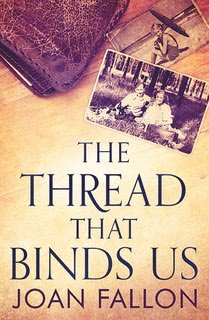 Have you ever had a secret that you cannot tell anyone - even your closest friend? Susan’s childhood was full of secrets - ‘Don’t tell anyone,’ was her mother’s favourite phrase. So when she discovers that her father had had an illegitimate child, called Michael, she instinctively knows she can’t tell anyone.
Have you ever had a secret that you cannot tell anyone - even your closest friend? Susan’s childhood was full of secrets - ‘Don’t tell anyone,’ was her mother’s favourite phrase. So when she discovers that her father had had an illegitimate child, called Michael, she instinctively knows she can’t tell anyone.
But Susan isn’t a child anymore - she is a middle-aged woman who is keeping secrets from her husband in her search to find her half-brother. The need to know more about Michael becomes an obsession and she soon becomes enmeshed in a web of lies and deceit as she tries to track him down.
When she and Michael finally meet, Susan is faced with a dilemma - she can walk away and forget about him or she can tell her family and face the consequences.
'...As for the plot - it is as exciting and page-turning as any Murder Mystery or Psychological Thriller. And just when you think you have sussed out everything - there is some new discovery or you are confronted by another viewpoint on a complicated situation…A family secret can have as much impact as a dastardly crime and this one has many layers and unpredictable surprises.’ Sophie Meredith (author)
Links for PurchaseAmazon Author’s Website
About the author
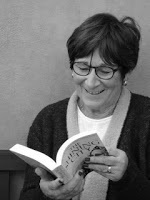 The Scottish author, Joan Fallon, began her career as a writer after moving to Spain at the start of the new millennium; her first published work was a social history, 'Daughters of Spain', inspired by the women she met in her new home. The research for this book in turn encouraged her to write the following two novels: 'Spanish Lavender', which is set in Malaga during the early years of the Civil War and 'The House on the Beach', the story of two young women growing up in Franco's Spain. Her subsequent novels have grown out of her experiences living and working in Spain.
The Scottish author, Joan Fallon, began her career as a writer after moving to Spain at the start of the new millennium; her first published work was a social history, 'Daughters of Spain', inspired by the women she met in her new home. The research for this book in turn encouraged her to write the following two novels: 'Spanish Lavender', which is set in Malaga during the early years of the Civil War and 'The House on the Beach', the story of two young women growing up in Franco's Spain. Her subsequent novels have grown out of her experiences living and working in Spain.
She is a member of the Society of Authors and the Alliance of Independent Authors.Useful Links Website Twitter
Facebook
 Have you ever had a secret that you cannot tell anyone - even your closest friend? Susan’s childhood was full of secrets - ‘Don’t tell anyone,’ was her mother’s favourite phrase. So when she discovers that her father had had an illegitimate child, called Michael, she instinctively knows she can’t tell anyone.
Have you ever had a secret that you cannot tell anyone - even your closest friend? Susan’s childhood was full of secrets - ‘Don’t tell anyone,’ was her mother’s favourite phrase. So when she discovers that her father had had an illegitimate child, called Michael, she instinctively knows she can’t tell anyone.But Susan isn’t a child anymore - she is a middle-aged woman who is keeping secrets from her husband in her search to find her half-brother. The need to know more about Michael becomes an obsession and she soon becomes enmeshed in a web of lies and deceit as she tries to track him down.
When she and Michael finally meet, Susan is faced with a dilemma - she can walk away and forget about him or she can tell her family and face the consequences.
'...As for the plot - it is as exciting and page-turning as any Murder Mystery or Psychological Thriller. And just when you think you have sussed out everything - there is some new discovery or you are confronted by another viewpoint on a complicated situation…A family secret can have as much impact as a dastardly crime and this one has many layers and unpredictable surprises.’ Sophie Meredith (author)
Links for PurchaseAmazon Author’s Website
About the author
 The Scottish author, Joan Fallon, began her career as a writer after moving to Spain at the start of the new millennium; her first published work was a social history, 'Daughters of Spain', inspired by the women she met in her new home. The research for this book in turn encouraged her to write the following two novels: 'Spanish Lavender', which is set in Malaga during the early years of the Civil War and 'The House on the Beach', the story of two young women growing up in Franco's Spain. Her subsequent novels have grown out of her experiences living and working in Spain.
The Scottish author, Joan Fallon, began her career as a writer after moving to Spain at the start of the new millennium; her first published work was a social history, 'Daughters of Spain', inspired by the women she met in her new home. The research for this book in turn encouraged her to write the following two novels: 'Spanish Lavender', which is set in Malaga during the early years of the Civil War and 'The House on the Beach', the story of two young women growing up in Franco's Spain. Her subsequent novels have grown out of her experiences living and working in Spain. She is a member of the Society of Authors and the Alliance of Independent Authors.Useful Links Website Twitter
Published on February 06, 2017 00:00
February 3, 2017
#bookreview ~ Pirate Heiress #HistFic #Romance @flowers_chloe
Pirate Heiress By Chloe Flowers
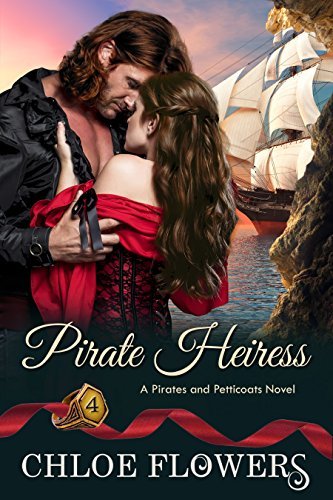 A beautiful pirate, a vengeful sea captain and a secret treasure…will love save them or destroy them?
A beautiful pirate, a vengeful sea captain and a secret treasure…will love save them or destroy them?"Brilliantly funny and full of action..."
A high seas, historical, pirate romance filled with action and adventure, mystery and intrigue, and a quest for hidden treasure!
Reluctant pirate Stevie Savauge is on a quest with her family to find a secret treasure hidden by her great-great-grandparents, the two notorious pirates Anne Bonny and Calico Jack Rackham. When her eight-year-old twin siblings are kidnapped and the ransom demand is a merchant ship called the Seeker, Stevie must find the courage to conquer her fears and fight for those she loves.
Italian-born, French privateer Drago Viteri Gamponetti (Gampo to his men) has coveted the Ahern merchant fleet for years, and sets a trap in Jamaica. Unfortunately, he has two small trouble makers aboard; a boy who wants to be just like him, and a girl that will either steal him blind or turn his black heart.
When Captain Conal O’Brien discovers that the pirates work for his sworn enemy, he doesn’t resist capture. What better way to locate Gampo’s secret stronghold than to sail right into it? But these nutty brigands aren’t who they seem to be, and if Conal’s not careful, he’s going to lose his heart as well as his ship to the woman determined to possess both.
What did I think of the book?
A fire, a kidnapping, a treasure hunt, a romance and pirates — what was not to like about Pirate Heiress?
If it weren't for Stevie Savauge and the whole catching the kitchen and then the rest of the building on fire incident, her family would still have a home, and her family would not have gone on a quest to find a secret treasure hidden by her Great Great Grandparents — which subsequently led to the capture of her eight-year-old siblings. Now the kidnapper is demanding that they deliver him a ship called the Seeker or the children will die.
Does Stevie's family have it in them to become pirates, save the children and find the treasure? Time will tell...
I was intrigued by the blurb, and by the time I had read the first chapter I knew this book was a keeper. With mesmerising prose and a storyline that I simply adored, Pirate Heiress has all the makings for a great read.
I loved the characterisation of Stevie. Stevie is thrown into a man's world — a pirates world— and she has to learn very quickly how to stay alive. What she did not expect to find was love with Captain Conal O’Brien, especially after she and her family took control of his ship! The romance between the two is a steady build which simmers and then explodes into one heck of a storm that neither Stevie or Conel will ever recover from! Totally believable and very romantic! Love, Love, Loved it!!
It seems a strange thing to say, but I really liked the antagonist of this novel. Drago Viteri Gamponetti has his own back story, which takes nothing away from the protagonists but kept me interested and turning those pages. I wanted to dislike him but found that I could not, for he is, despite the whole kidnapping incident, a nice man.
This storyline itself was well thought out and engaging. I have read a fair few "pirate romances," and I have to say that Pirate Heiress is up there with the best. FANTASTIC READ!!
I thoroughly enjoyed Pirates Heiress, and I look forward to reading more books from this author. Well done, Chloe Flowers!
I Highly Recommend.
*I received a complimentary copy of this book from Netgalley, and I chose to leave a review*
Links for PurchaseAmazon USAmazon UK
About the author

A Parrothead at heart, Chloe’s love for pirates began with Peter Pan and continued with Pirates of the Caribbean and ghost stories about pirates from the Outer Banks. She listens to Celtic music while she writes. When life gets too serious, she reads Calvin and Hobbes comics. She lives in Ohio with her tall, dark and handsome husband, three children and two rambunctious dogs, Indiana and Luke, who are named after her two favorite action heroes.
Descended from a family of cooks and gourmet chefs, Chloe is a true foodie and along with working for fortune 500 companies in marketing and teaching MBA students strategic marketing, she also ran a gourmet cookie company. Cooking for a crowd runs in the blood, so her fridge is always full. She deals with stress by baking pies (just ask her college roommates what it was like for them around exam time).
Her idea of a perfect day? Sailing on the Caribbean with her family, sun in her face and wind at her back, and finishing the day in the kitchen making a fab gourmet meal and sipping a glass of wine.
Published on February 03, 2017 00:00
February 2, 2017
Robin Hood and his — how many merry men??! #history #folklore
It has been a little bit quiet on the blog these past weeks, and I do apologies for that. I am rather caught up in writing Book 3 of The Du Lac Chronicles, but I haven't forgotten you, I promise!
If you are a regular reader of this blog then you know that I had just started to research the life and times of Robin Hood late last year, but what with the release of The Du Lac Devil and Christmas, I got a little side-tracked, but I am back on the straight and narrow, and I am keen to find out more about the elusive Robin Hood.

Let's have a quick recap of what I have talked about before and if you have missed any of the posts you can catch up!
Where do we start looking for the real Robin Hood Is this the real Robin HoodMy search for Robin Hood continues... #Legends #Sherwood #RobinHoodRobin Hood & King Richard ~ the strangest alliance in history. Robin Hood and the dishonourable Prince John

Continuing from where I left off, I want to have a look at Robin’s band of merry men.
I wonder, how many merry men can you list?
Little John ~ the tall guy who was good with a stick.Friar Tuck ~ the monk.Will Scarlett ~ the bad tempered one.Much the Miller's son ~ the simpleton.Maid Marion ~ Robin’s bride.
How about...?Alan-a-Dale David of Doncaster
Can you think of any more?

In the coming weeks I am going to be looking closely at Robin's band of merry men ~ I am so excited to learn more about this motley crew, I hope you are too!
Published on February 02, 2017 00:00
February 1, 2017
Author’s Inspiration ~ Suzy Henderson #HistFic @Suzy_Henderson
It is with the greatest of pleasure that Historical Fiction author, Suzy Henderson, is on the blog today to tell us about the inspiration behind her debut novel… The Beauty Shop
 England,1942. After three years of WWII, Britain is showing the scars. But in this darkest of days, three lives intertwine, changing their destinies and those of many more.
England,1942. After three years of WWII, Britain is showing the scars. But in this darkest of days, three lives intertwine, changing their destinies and those of many more.
Dr Archibald McIndoe, a New Zealand plastic surgeon with unorthodox methods, is on a mission to treat and rehabilitate badly burned airmen – their bodies and souls. With the camaraderie and support of the Guinea Pig Club, his boys battle to overcome disfigurement, pain, and prejudice to learn to live again.
John ‘Mac’ Mackenzie of the US Air Force is aware of the odds. He has one chance in five of surviving the war. Flying bombing missions through hell and back, he’s fighting more than the Luftwaffe. Fear and doubt stalk him on the ground and in the air, and he’s torn between his duty and his conscience.
Shy, decent and sensible Stella Charlton’s future seems certain until war breaks out. As a new recruit to the WAAF, she meets an American pilot on New Year’s Eve. After just one dance, she falls head over heels for the handsome airman. But when he survives a crash, she realises her own battle has only just begun.
Based on a true story, "The Beauty Shop" is a moving tale of love, compassion, and determination against a backdrop of wartime tragedy. *** Author’s Inspiration
 Thank you for the invite, Mary Anne. It’s a pleasure to be here today, and I thought I’d chat a little about the relevance of minor characters.
Thank you for the invite, Mary Anne. It’s a pleasure to be here today, and I thought I’d chat a little about the relevance of minor characters.
Minor characters have a purpose. They’re not there to merely pad out a novel; they have to be relevant and in being so, they add depth to your narrative, enriching the story. One of the most important points we are aware of as writers is the reader. Readers become attached and invested in our characters and so it’s important to establish which characters are major and which are minor. However, it’s still possible to become attached to a minor character and should that character disappear or be killed off then the reader may well be left feeling disappointed. Writing is full of such dilemmas – so what do you do? Consult the ‘writing rules’? – that delightful long list of do’s and don’ts we’re all introduced to quite early on, but like so many rules, they are there to be broken.
One of the early critiques of my book raised some questions. One of them was the relevance of a minor character, Richard Hillary. “Why was he in there? It’s nothing to do with him,” I was told. Yet beneath it all, I had this strong sense that I needed Hillary and that he had a voice to share. Richard Hillary was a real person, a young, handsome fighter pilot who flew and fought in the Battle of Britain.
2016 is the 75th anniversary of the Guinea Pig Club, an organization established in July 1941, by airmen who were severely burned or injured during the war in the air, and who were treated and cared for by the New Zealand plastic surgeon, Archibald McIndoe. The men in the club were known as ‘guinea pigs.’
Hillary became one of those brave heroes, or guinea pigs when on the 3rd September 1940 after his 5th kill, he was shot down by a Messerschmitt Bf 109, and landed in the Channel, badly burned. Within a few weeks, he was to find himself under the care of Archie McIndoe at the Queen Victoria Hospital in East Grinstead.
During the intervals of many weeks between operations, Hillary wrote his book, The Last Enemy, a fictionalized memoir, and could be seen gripping a pencil between his bandaged hands while he attempted to write. He achieved publication success in 1942, and his book was well received. As time dragged on, a very bored and frustrated Hillary wrote to the Air Ministry and volunteered to go to America on a propaganda mission to show the US how the aircraft and factory equipment they were sending to Britain was making a difference.
Astonishingly, he was granted permission, and ten months after being shot down, he set sail, arriving in America some eleven days later. However, he did not receive the red carpet treatment. Far from it, and he was left feeling somewhat humiliated. The US officials took one look at him and feared he might terrify the mothers of America’s male youth into pacifism. President Roosevelt himself became involved and the lecture tour Hillary was supposed to begin, did not proceed.
While there, Hillary also met the film actress, Merle Oberon, who took him under her wing and invited him to stay with her. They were to embark upon a brief and passionate affair, and upon Hillary’s return to England, he would look up an old friend of Merle’s, called Mary Booker. Mary would later explain that while she was initially shocked by Richard’s disfigured face, she noticed his intense eyes upon her as he invited her out to dinner, and she found herself unable to refuse his invitation. The pair soon began a relationship which would last until his death.
The one good thing that did come from his US trip was the mention of Archie’s work and the Guinea Pig Club. It raised much interest and by the end of 1942, money began to arrive at the hospital in East Grinstead. The American public sent cheques, letters offering support and employment among other things. Archie was overwhelmed, and this was the beginning of the club as a charity. Over the years, the club became quite a force, helping its members with things such as suitable housing, adaptations and even setting up businesses. Archie’s vision was for these men to go on to lead full lives, irrespective of how disabled they were. The club helped him to achieve this, transforming his vision into reality.
And so, when I began writing some years ago, and a voice whispered in my ear and kept on whispering, I knew I had to listen, and I had to act. I’m so glad I followed my intuition and ‘stuck to my guns’ especially as I recently discovered that one of my readers happens to be his distant relative, and she wrote to say how thrilled she was at his inclusion in the book. For me, Hillary epitomised that generation of young men who bravely went to war, and he was such an interesting person on so many levels, brimming with intrigue and mystery.
I have no doubt the club would have thrived without him, but the fact is that he was there at that time and he raised the profile of the club during his US visit. He forged a friendship with Archie, and I think Hillary left a lasting impression on him, a flavour of which is in the book.
In conclusion, a critique is always subjective. It’s one person’s opinion. You have to trust your instinct above all if you are to write the story the way it’s meant to be told.
In memory of Flight Lieutenant Richard Hope Hillary (20 April 1919 – 8 January 1943). Links for Purchase Amazon About the author
Suzy Henderson was born in the North of England, but a career in healthcare would eventually take her to rural Somerset. Years later, she decided to embark upon a degree in English Literature with The Open University.
That was the beginning of a new life journey, rekindling her love of writing and passion for history. With an obsession for military and aviation history, she began to write.
It was an old black and white photograph of her grandmother that caught Suzy’s imagination many years ago. Her grandmother died in 1980 as did her tales of war as she never spoke of those times. When she decided to research her grandmother’s war service in the WAAF, things spiralled from there. Stories came to light, little-known stories and tragedies and it is such discoveries that inform her writing.
Having relocated to the wilds of North Cumbria, she has the Pennines in sight and finally feels at home. Suzy is a member of the Historical Novel Society and the Romantic Novelists Association. "The Beauty Shop" is her debut novel and will be released 28th November 2016.
Useful Linkshttp://www.suzyhendersonauthor.com/suzyhenderson.wordpress.comhttp://lowfellwritersplace.blogspot.co.uk/https://www.goodreads.com/author/show/15954239.Suzy_Hendersonhttps://www.facebook.com/SuzyHendersonAuthor/https://twitter.com/Suzy_Hendersonhttps://plus.google.com/u/0/109057622139171622985https://uk.linkedin.com/in/suzy-henderson-714a4353 Posted by Mary Anne Yardeat 00:00
 England,1942. After three years of WWII, Britain is showing the scars. But in this darkest of days, three lives intertwine, changing their destinies and those of many more.
England,1942. After three years of WWII, Britain is showing the scars. But in this darkest of days, three lives intertwine, changing their destinies and those of many more.Dr Archibald McIndoe, a New Zealand plastic surgeon with unorthodox methods, is on a mission to treat and rehabilitate badly burned airmen – their bodies and souls. With the camaraderie and support of the Guinea Pig Club, his boys battle to overcome disfigurement, pain, and prejudice to learn to live again.
John ‘Mac’ Mackenzie of the US Air Force is aware of the odds. He has one chance in five of surviving the war. Flying bombing missions through hell and back, he’s fighting more than the Luftwaffe. Fear and doubt stalk him on the ground and in the air, and he’s torn between his duty and his conscience.
Shy, decent and sensible Stella Charlton’s future seems certain until war breaks out. As a new recruit to the WAAF, she meets an American pilot on New Year’s Eve. After just one dance, she falls head over heels for the handsome airman. But when he survives a crash, she realises her own battle has only just begun.
Based on a true story, "The Beauty Shop" is a moving tale of love, compassion, and determination against a backdrop of wartime tragedy. *** Author’s Inspiration
 Thank you for the invite, Mary Anne. It’s a pleasure to be here today, and I thought I’d chat a little about the relevance of minor characters.
Thank you for the invite, Mary Anne. It’s a pleasure to be here today, and I thought I’d chat a little about the relevance of minor characters.Minor characters have a purpose. They’re not there to merely pad out a novel; they have to be relevant and in being so, they add depth to your narrative, enriching the story. One of the most important points we are aware of as writers is the reader. Readers become attached and invested in our characters and so it’s important to establish which characters are major and which are minor. However, it’s still possible to become attached to a minor character and should that character disappear or be killed off then the reader may well be left feeling disappointed. Writing is full of such dilemmas – so what do you do? Consult the ‘writing rules’? – that delightful long list of do’s and don’ts we’re all introduced to quite early on, but like so many rules, they are there to be broken.
One of the early critiques of my book raised some questions. One of them was the relevance of a minor character, Richard Hillary. “Why was he in there? It’s nothing to do with him,” I was told. Yet beneath it all, I had this strong sense that I needed Hillary and that he had a voice to share. Richard Hillary was a real person, a young, handsome fighter pilot who flew and fought in the Battle of Britain.
2016 is the 75th anniversary of the Guinea Pig Club, an organization established in July 1941, by airmen who were severely burned or injured during the war in the air, and who were treated and cared for by the New Zealand plastic surgeon, Archibald McIndoe. The men in the club were known as ‘guinea pigs.’
Hillary became one of those brave heroes, or guinea pigs when on the 3rd September 1940 after his 5th kill, he was shot down by a Messerschmitt Bf 109, and landed in the Channel, badly burned. Within a few weeks, he was to find himself under the care of Archie McIndoe at the Queen Victoria Hospital in East Grinstead.
During the intervals of many weeks between operations, Hillary wrote his book, The Last Enemy, a fictionalized memoir, and could be seen gripping a pencil between his bandaged hands while he attempted to write. He achieved publication success in 1942, and his book was well received. As time dragged on, a very bored and frustrated Hillary wrote to the Air Ministry and volunteered to go to America on a propaganda mission to show the US how the aircraft and factory equipment they were sending to Britain was making a difference.
Astonishingly, he was granted permission, and ten months after being shot down, he set sail, arriving in America some eleven days later. However, he did not receive the red carpet treatment. Far from it, and he was left feeling somewhat humiliated. The US officials took one look at him and feared he might terrify the mothers of America’s male youth into pacifism. President Roosevelt himself became involved and the lecture tour Hillary was supposed to begin, did not proceed.
While there, Hillary also met the film actress, Merle Oberon, who took him under her wing and invited him to stay with her. They were to embark upon a brief and passionate affair, and upon Hillary’s return to England, he would look up an old friend of Merle’s, called Mary Booker. Mary would later explain that while she was initially shocked by Richard’s disfigured face, she noticed his intense eyes upon her as he invited her out to dinner, and she found herself unable to refuse his invitation. The pair soon began a relationship which would last until his death.
The one good thing that did come from his US trip was the mention of Archie’s work and the Guinea Pig Club. It raised much interest and by the end of 1942, money began to arrive at the hospital in East Grinstead. The American public sent cheques, letters offering support and employment among other things. Archie was overwhelmed, and this was the beginning of the club as a charity. Over the years, the club became quite a force, helping its members with things such as suitable housing, adaptations and even setting up businesses. Archie’s vision was for these men to go on to lead full lives, irrespective of how disabled they were. The club helped him to achieve this, transforming his vision into reality.
And so, when I began writing some years ago, and a voice whispered in my ear and kept on whispering, I knew I had to listen, and I had to act. I’m so glad I followed my intuition and ‘stuck to my guns’ especially as I recently discovered that one of my readers happens to be his distant relative, and she wrote to say how thrilled she was at his inclusion in the book. For me, Hillary epitomised that generation of young men who bravely went to war, and he was such an interesting person on so many levels, brimming with intrigue and mystery.
I have no doubt the club would have thrived without him, but the fact is that he was there at that time and he raised the profile of the club during his US visit. He forged a friendship with Archie, and I think Hillary left a lasting impression on him, a flavour of which is in the book.
In conclusion, a critique is always subjective. It’s one person’s opinion. You have to trust your instinct above all if you are to write the story the way it’s meant to be told.
In memory of Flight Lieutenant Richard Hope Hillary (20 April 1919 – 8 January 1943). Links for Purchase Amazon About the author
Suzy Henderson was born in the North of England, but a career in healthcare would eventually take her to rural Somerset. Years later, she decided to embark upon a degree in English Literature with The Open University.
That was the beginning of a new life journey, rekindling her love of writing and passion for history. With an obsession for military and aviation history, she began to write.
It was an old black and white photograph of her grandmother that caught Suzy’s imagination many years ago. Her grandmother died in 1980 as did her tales of war as she never spoke of those times. When she decided to research her grandmother’s war service in the WAAF, things spiralled from there. Stories came to light, little-known stories and tragedies and it is such discoveries that inform her writing.
Having relocated to the wilds of North Cumbria, she has the Pennines in sight and finally feels at home. Suzy is a member of the Historical Novel Society and the Romantic Novelists Association. "The Beauty Shop" is her debut novel and will be released 28th November 2016.
Useful Linkshttp://www.suzyhendersonauthor.com/suzyhenderson.wordpress.comhttp://lowfellwritersplace.blogspot.co.uk/https://www.goodreads.com/author/show/15954239.Suzy_Hendersonhttps://www.facebook.com/SuzyHendersonAuthor/https://twitter.com/Suzy_Hendersonhttps://plus.google.com/u/0/109057622139171622985https://uk.linkedin.com/in/suzy-henderson-714a4353 Posted by Mary Anne Yardeat 00:00

Published on February 01, 2017 00:00
January 31, 2017
Abbeys ~ and why I love them! #history
Confession time ~ I hold up my hands and admit that I have a thing about Abbeys and I always have. Why? you may ask. To be honest, I have absolutely no idea, but there it is...
Today, I wanted to share with you some of my favourite Abbeys that I have been too.
Enjoy!
Rievaulx Abbey(North Yorkshire)
"Everywhere peace, everywhere serenity, and a marvellous freedom from the tumult of the world..." St Aelred on Rievaulx.

Impressive, isn't it?
In 1132, twelve, Clairvaux monks came to Rievaulx. This was to be the start of something very big. Rievaulx became one of the wealthiest monasteries in Medieval England.

Rievaulx had a very famous Abbot ~ Abbot Aelred. He was a renowned author and preacher, and this attracted a steady flow of monks to the Abbey. He died in 1167. But even without his presence, Rievaulx continued to be a vibrant and busy Abbey. Unfortunately, Rievaulx fell victim to Henry VIII, Dissolution of the Monasteries.
Easby Abbey(North Yorkshire)

Founded in 1152, Easby, like many other Abbeys, Easby was demolished during Henry VIII, Dissolution of the Monasteries. Unfortunately, this is going to be a common theme for this post.
I really liked Easby, It was a rather wet day when we visited the Abbey, and we found to our delight that we had the ruins all to ourselves.
Whitby Abbey(North Yorkshire)

Whitby the "Goth" capital of Britain ~ thanks to Bram Strokes, Dracula.
Founded in AD 657 by King Oswy of Northumbria. It was at Whitby that the future of the English Church was decided. It was also the place where Northumbrian Kings and Saints were enshrined

Whitby Abbey suffered severe damage in 1914 when it was hit by German naval shelling. On top of that, years of rain and high winds, has taken its toll on this beautiful Abbey.
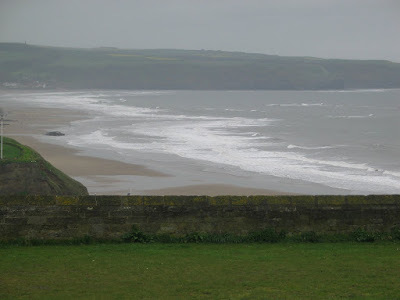
It was pouring down with rain the day we visited Whitby, but that did not take away the beauty of the place, and with views like this, it is easy to understand why Whitby attracts so many visitors and has been such an inspiration for artists over the years.
Lindisfarne Priory(Northumberland)

I know, not quite an Abbey, but Lindisfarne Priory was one of the most important sites of early Christianity in England. It is also one of my favourite places to visit.

Oswald, King of Northumberland, summoned Aidan (an Irish monk from Iona) to be bishop of his kingdom in AD 635. Oswald granted Aidan and his followers a small tidal island called Lindisfarne.
Lindisfarne's most notable Bishop was a monk called Cuthbert. Cuthbert joined the monastery at Lindisfarne sometime in the 670s. He tried to impose Roman religious practices rather than Irish ones. This was met with grave opposition. Cuthbert decided to remove himself from the monastery and became a hermit. At first, he decided that a small island just a stone's throw away from the priory would do (having seen the island I did wonder what was going through his head at the time, it is really tiny), Cuthbert then removed himself to a more remote island of Inner Farne!
Cuthbert was made Bishop in 685.

On 8th June 703, the unthinkable happened...
"Pagans have desecrated God’s sanctuary, shed the blood of saints around the altar, laid waste the house of our hope and trampled the bodies of saints like dung in the streets … What assurance can the churches of Britain have, if St Cuthbert and so great a company of saints do not defend their own?"Alcuin, a York scholar working at the court of King Charlemagne in Francia.
The Vikings first significant attack in Western Europe occurred at Lindisfarne and the rest, as they say, is history.
The priory was closed, during Henry VIII, Dissolution of the Monasteries in 1537.
Jedburgh Abbey(The Scottish Borders)

Founded by David I in 1138, Jedbury Abbey is an Augustinians Abbey. Jedbury started life as a priory but was raised to the status of monastery in c.1147.
Alexander III of Scotland married Yolande, daughter of the Compte de Dreux, in 1285 at the Abbey.
Being in the borders, Jedbury Abbey had its fair share of dramas. In 1296, the Abbot of Jedburgh swore fealty to Edward I of England. The Abbey was pillaged in 1297 by the English as a retribution to their defeat at Stirling by William Wallace. Robert the Bruce was a patron of the Abbey during his reign. The English once again pillaged the Abbey in 1346 after the Scottish defeat at The Battle of Neville's Cross. Like the Bruce, David II of Scotland was also a patron of the Abbey. The Earl of Warwick caused more trouble for the Abbey in 1410, 1416 and again in 1464. The Earl of Surrey set the Abbey and the town on fire in 1523, and so it continued... It is amazing there is anything of the Abbey left standing. If walls could talk then, Jedbury Abbey could certainly tell a story or two.
I really liked Jedbury, and the history of the place is fascinating. Well worth checking out.
Melrose Abbey(The Scottish Borders)

Founded by Saint Aidan of Lindisfarne. Melrose Abbey was the first Cistercian abbey in Scotland. It is said that it took around ten years to build. At its peak, Melrose Abbey was the home of 100 monks.

Being in the borders meant that Melrose was in the firing-line the same as Jedbury Abbey was.
Interesting fact ~ Robert the Bruce's heart is said to be buried in the church.
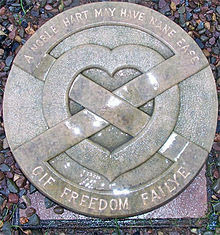
I adore Melrose Abbey. Is is such a beautiful, tranquil place and it is easy to imagine what the Abbey must have been like in its heyday.
Glastonbury Abbey(Somerset)

In the 7th Century, the Saxons (who had converted to Christianity) conquered the ancient Kingdom of Somerset, and so it began...
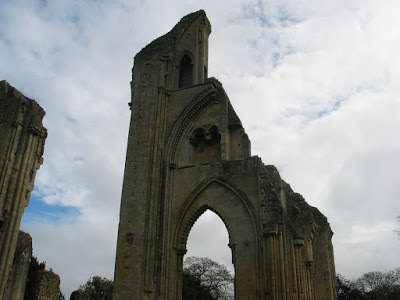
Glastonbury Abbey weathered the storm, so to speak, and survived the Norman Invasion. By the 14th Century, Glastonbury Abbey was the second wealthiest Abbey in the country (second ony to Westminster Abbey).
It was said that Glastonbury Abbey was the burial place of King Arthur and Guinevere ( an elaborate story told by pragmatic monks, it turns out).
Glastonbury Abbey was caught up in Henry VIII Dissolution of the Monasteries, which should come as no surprise. In 1536 there were over 800 monasteries, nunneries and friaries in Britain. By 1541, thanks to Henry VIII, there were none.
Cleeve Abbey(Somerset)
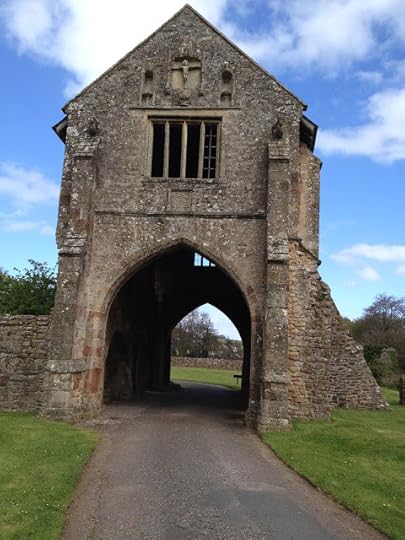
Cleeve Abbey is amazing. It boasts the most impressive and unaltered set of monastic cloisters in England ~ which considering Cleeve Abbey fell victim to yes, you guessed it, Henry VIII, Dissolution of the Monasteries; it is something to be thankful for!
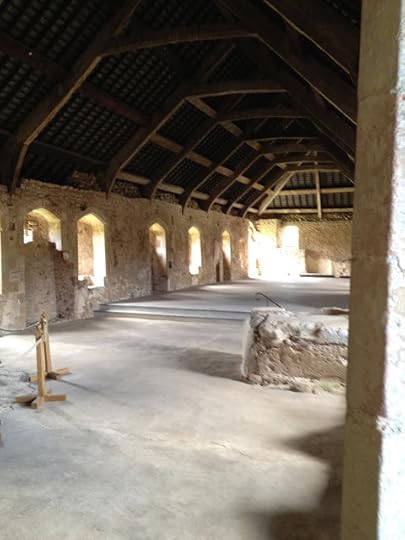
This is such a beautiful Abbey and there is so much to explore, we spent a whole day here.


Lacock Abbey(Wiltshire)
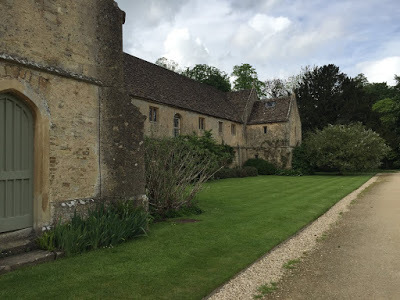
Founded in 1229 by Lady Ela the Countess of Salisbury. Lacock Abbey saw its first Augustinian nuns veiled in 1232. Lacock flourished during the Middle Ages and then came along, that is right, you guessed it, Henry VIII. Henry sold the Abbey to Sir William Sharington for £783. Sir William demolished the abbey church and converted the abbey into a house.
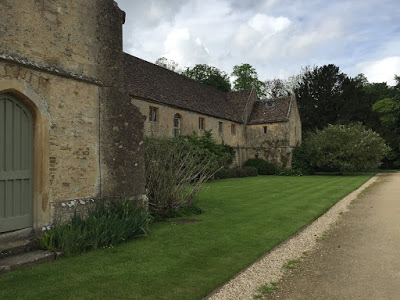
The Abbey has been used as a location for many films, Harry Potter and The Other Boleyn Girl, to name but a few.
And there we have it. Some of my favourite Abbeys. Now over to you ~ What is your favourite Abbey?
Today, I wanted to share with you some of my favourite Abbeys that I have been too.
Enjoy!
Rievaulx Abbey(North Yorkshire)
"Everywhere peace, everywhere serenity, and a marvellous freedom from the tumult of the world..." St Aelred on Rievaulx.

Impressive, isn't it?
In 1132, twelve, Clairvaux monks came to Rievaulx. This was to be the start of something very big. Rievaulx became one of the wealthiest monasteries in Medieval England.

Rievaulx had a very famous Abbot ~ Abbot Aelred. He was a renowned author and preacher, and this attracted a steady flow of monks to the Abbey. He died in 1167. But even without his presence, Rievaulx continued to be a vibrant and busy Abbey. Unfortunately, Rievaulx fell victim to Henry VIII, Dissolution of the Monasteries.
Easby Abbey(North Yorkshire)

Founded in 1152, Easby, like many other Abbeys, Easby was demolished during Henry VIII, Dissolution of the Monasteries. Unfortunately, this is going to be a common theme for this post.

I really liked Easby, It was a rather wet day when we visited the Abbey, and we found to our delight that we had the ruins all to ourselves.
Whitby Abbey(North Yorkshire)

Whitby the "Goth" capital of Britain ~ thanks to Bram Strokes, Dracula.
Founded in AD 657 by King Oswy of Northumbria. It was at Whitby that the future of the English Church was decided. It was also the place where Northumbrian Kings and Saints were enshrined

Whitby Abbey suffered severe damage in 1914 when it was hit by German naval shelling. On top of that, years of rain and high winds, has taken its toll on this beautiful Abbey.

It was pouring down with rain the day we visited Whitby, but that did not take away the beauty of the place, and with views like this, it is easy to understand why Whitby attracts so many visitors and has been such an inspiration for artists over the years.
Lindisfarne Priory(Northumberland)

I know, not quite an Abbey, but Lindisfarne Priory was one of the most important sites of early Christianity in England. It is also one of my favourite places to visit.

Oswald, King of Northumberland, summoned Aidan (an Irish monk from Iona) to be bishop of his kingdom in AD 635. Oswald granted Aidan and his followers a small tidal island called Lindisfarne.
Lindisfarne's most notable Bishop was a monk called Cuthbert. Cuthbert joined the monastery at Lindisfarne sometime in the 670s. He tried to impose Roman religious practices rather than Irish ones. This was met with grave opposition. Cuthbert decided to remove himself from the monastery and became a hermit. At first, he decided that a small island just a stone's throw away from the priory would do (having seen the island I did wonder what was going through his head at the time, it is really tiny), Cuthbert then removed himself to a more remote island of Inner Farne!
Cuthbert was made Bishop in 685.

On 8th June 703, the unthinkable happened...
"Pagans have desecrated God’s sanctuary, shed the blood of saints around the altar, laid waste the house of our hope and trampled the bodies of saints like dung in the streets … What assurance can the churches of Britain have, if St Cuthbert and so great a company of saints do not defend their own?"Alcuin, a York scholar working at the court of King Charlemagne in Francia.
The Vikings first significant attack in Western Europe occurred at Lindisfarne and the rest, as they say, is history.
The priory was closed, during Henry VIII, Dissolution of the Monasteries in 1537.
Jedburgh Abbey(The Scottish Borders)

Founded by David I in 1138, Jedbury Abbey is an Augustinians Abbey. Jedbury started life as a priory but was raised to the status of monastery in c.1147.
Alexander III of Scotland married Yolande, daughter of the Compte de Dreux, in 1285 at the Abbey.
Being in the borders, Jedbury Abbey had its fair share of dramas. In 1296, the Abbot of Jedburgh swore fealty to Edward I of England. The Abbey was pillaged in 1297 by the English as a retribution to their defeat at Stirling by William Wallace. Robert the Bruce was a patron of the Abbey during his reign. The English once again pillaged the Abbey in 1346 after the Scottish defeat at The Battle of Neville's Cross. Like the Bruce, David II of Scotland was also a patron of the Abbey. The Earl of Warwick caused more trouble for the Abbey in 1410, 1416 and again in 1464. The Earl of Surrey set the Abbey and the town on fire in 1523, and so it continued... It is amazing there is anything of the Abbey left standing. If walls could talk then, Jedbury Abbey could certainly tell a story or two.
I really liked Jedbury, and the history of the place is fascinating. Well worth checking out.
Melrose Abbey(The Scottish Borders)

Founded by Saint Aidan of Lindisfarne. Melrose Abbey was the first Cistercian abbey in Scotland. It is said that it took around ten years to build. At its peak, Melrose Abbey was the home of 100 monks.

Being in the borders meant that Melrose was in the firing-line the same as Jedbury Abbey was.
Interesting fact ~ Robert the Bruce's heart is said to be buried in the church.

I adore Melrose Abbey. Is is such a beautiful, tranquil place and it is easy to imagine what the Abbey must have been like in its heyday.
Glastonbury Abbey(Somerset)

In the 7th Century, the Saxons (who had converted to Christianity) conquered the ancient Kingdom of Somerset, and so it began...

Glastonbury Abbey weathered the storm, so to speak, and survived the Norman Invasion. By the 14th Century, Glastonbury Abbey was the second wealthiest Abbey in the country (second ony to Westminster Abbey).
It was said that Glastonbury Abbey was the burial place of King Arthur and Guinevere ( an elaborate story told by pragmatic monks, it turns out).
Glastonbury Abbey was caught up in Henry VIII Dissolution of the Monasteries, which should come as no surprise. In 1536 there were over 800 monasteries, nunneries and friaries in Britain. By 1541, thanks to Henry VIII, there were none.
Cleeve Abbey(Somerset)

Cleeve Abbey is amazing. It boasts the most impressive and unaltered set of monastic cloisters in England ~ which considering Cleeve Abbey fell victim to yes, you guessed it, Henry VIII, Dissolution of the Monasteries; it is something to be thankful for!

This is such a beautiful Abbey and there is so much to explore, we spent a whole day here.


Lacock Abbey(Wiltshire)

Founded in 1229 by Lady Ela the Countess of Salisbury. Lacock Abbey saw its first Augustinian nuns veiled in 1232. Lacock flourished during the Middle Ages and then came along, that is right, you guessed it, Henry VIII. Henry sold the Abbey to Sir William Sharington for £783. Sir William demolished the abbey church and converted the abbey into a house.

The Abbey has been used as a location for many films, Harry Potter and The Other Boleyn Girl, to name but a few.
And there we have it. Some of my favourite Abbeys. Now over to you ~ What is your favourite Abbey?
Published on January 31, 2017 00:00
The Coffee Pot Book Club
The Coffee Pot Book Club (formally Myths, Legends, Books, and Coffee Pots) was founded in 2015. Our goal was to create a platform that would help Historical Fiction, Historical Romance and Historical
The Coffee Pot Book Club (formally Myths, Legends, Books, and Coffee Pots) was founded in 2015. Our goal was to create a platform that would help Historical Fiction, Historical Romance and Historical Fantasy authors promote their books and find that sometimes elusive audience. The Coffee Pot Book Club soon became the place for readers to meet new authors (both traditionally published and independently) and discover their fabulous books.
...more
...more
- Mary Anne Yarde's profile
- 159 followers



